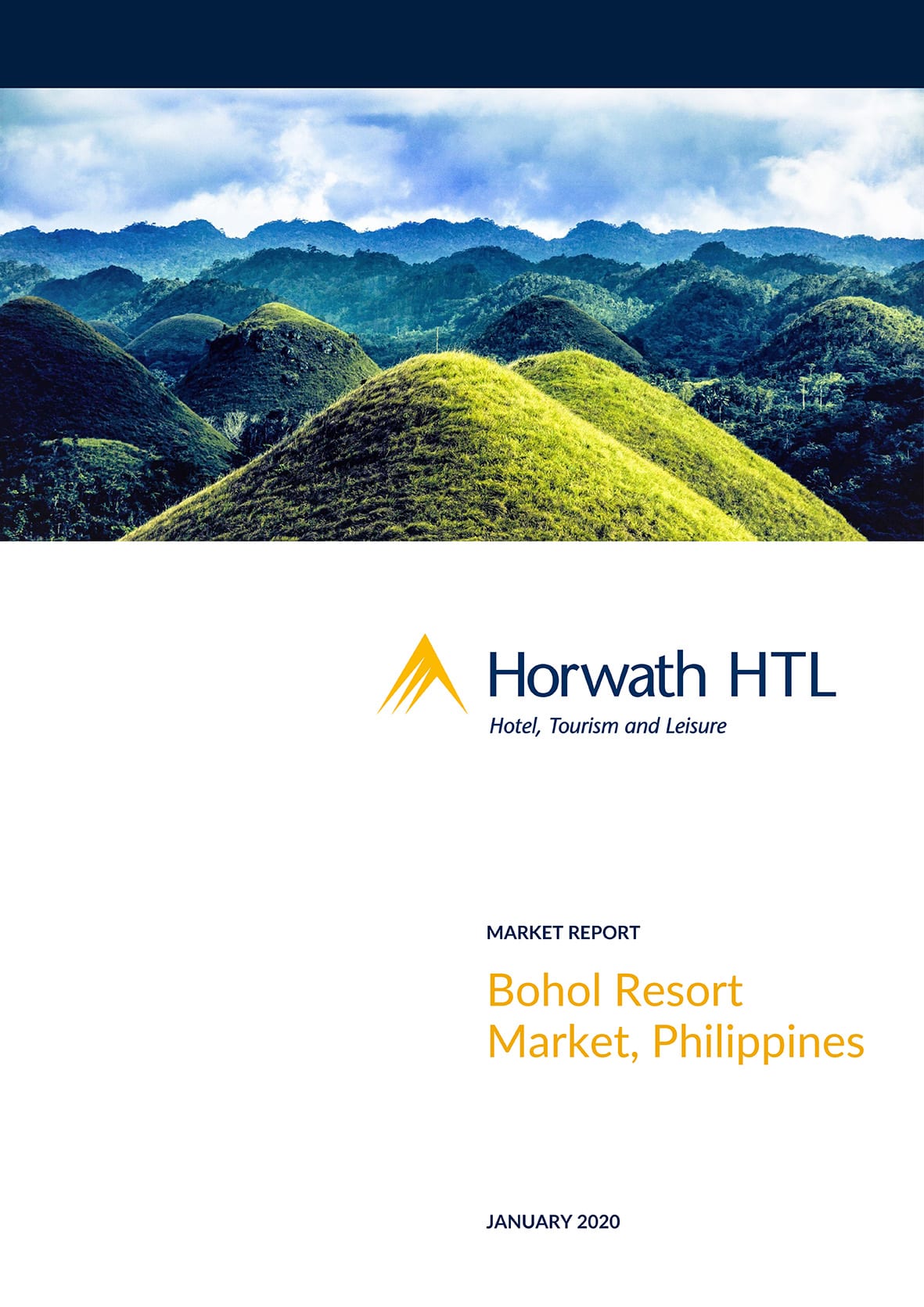
Report
Bohol Resort Market, Philippines
Perennially popular for its Chocolate Hills and tarsier sanctuary, today Bohol has raised its profile internationally as an inimitable ecotourism destination. Recent tourism boom is propelled by the opening of new Bohol International Airport, infrastructure developments, and government’s continuous tourism promotion.
Unique from other destinations, Bohol offers a myriad of attractions from landscape to seascape. Advantageous to Boracay, it boasts more than white sand beaches and is home to one of the world’s best diving sites. Every year Bohol Marine Triangle attracts avid divers with rich marine biodiversity.
Unsurprisingly, Bohol has also caught the attention of investors for hotel and leisure developments. Unlike other commercialised resort destinations, Panglao exudes an idyllic charm and authentic hospitality from the local communities appealing to travellers who prefer tranquillity and quietness.
As tourism accounts for 90 percent of Bohol’s industry, the critical question on the outlook of Bohol tourism is:
“Amidst of rapid tourism growth, will Bohol be able to manage the dichotomy of sustainable tourism to maintain its positioning as a première ecotourism destination whilst being cautious of the environment degradation resulting from construction and tourist influx?”
Tourism Growth
- Visitor Arrivals: From 2008 to 2018, Bohol saw visitor arrivals grow fivefold from 280,000 to nearly 1.5 million, with a Compound Average Annual Growth (CAAG) rate of 18%. The growth in international arrivals (23%) outpaced domestic visitors (16%).
- Impact of 2013 Earthquake: The earthquake widened Bohol’s international media exposure, attracting global attention and visitors.
Key Drivers
- New Bohol-Panglao International Airport: Opened in November 2018, replacing Tagbilaran Airport, it can handle 2 million passengers annually.
- Road and Sea Connectivity: Improved infrastructure, including planned bridge connections and expanded seaport facilities, enhances accessibility.
- Tourism Economic Zone and Sports Complex: Investments in luxury hotels, convention centres, and sports facilities are underway, promoting tourism and economic growth.
Visitor Demographics
- Domestic Market: 57% of total visitors, with a rising global recognition reducing this from 72% five years ago.
- International Market: 43% of total visitors, led by Mainland China (17%), South Korea (10%), and Taiwan (2%). Other notable markets include the USA, France, Germany, and Japan.
Seasonality
Bohol experiences peak travel seasons from December to May, coinciding with favourable weather and school holidays. December is particularly busy due to international winter escapes and Christmas holidays. The Chinese New Year in January/February and the Easter and Fiesta Month in April and May also see high visitor numbers. The low season runs from June to October due to the monsoon season.
Hotel Market Performance
- Occupancy Rates: From 2015-2018, the market saw a significant increase in occupancy, peaking at 89% by August 2019. The closure of Boracay and the opening of the new airport contributed to this high occupancy.
- ADR and RevPAR: The market experienced healthy ADR growth, surpassing inflation, with RevPAR growing at 37% from 2015 to 2018. The re-opening of Boracay slightly impacted occupancy but maintained high ADRs.
Demand Segmentation
- Transient Business: Comprising 57% of total demand, sourced from OTAs, Direct FIT, and Wholesale FIT.
- Group Business: Representing 43% of total demand, including Tour Groups and MICE segments. The MICE segment is expected to grow with enhanced meeting facilities and promotional efforts by the provincial tourism authority.
New Hotel Supply
A total of 3,354 new rooms are expected to be added by 2027, including expansions and new projects. Key developments include South Palms, Best Western Ivywall Alona, Bluewater Panglao, Henann Alona, Bellevue, Modala Leisure Village, Crown Regency Panglao, JPark Waterpark, and BE Grand.
Performance Outlook
- Short to Mid-Term: The influx of new supply may pressure demand growth, leading to an occupancy drop. ADR growth is expected to be suppressed due to increased competition.
- Long-Term: Occupancy is projected to recover as supply growth slows and demand continues to rise. Infrastructure developments and improved airport efficiency will enhance accessibility, attracting more international visitors.
Download the report
For detailed charts, graphs, and further analysis, download the full report here






